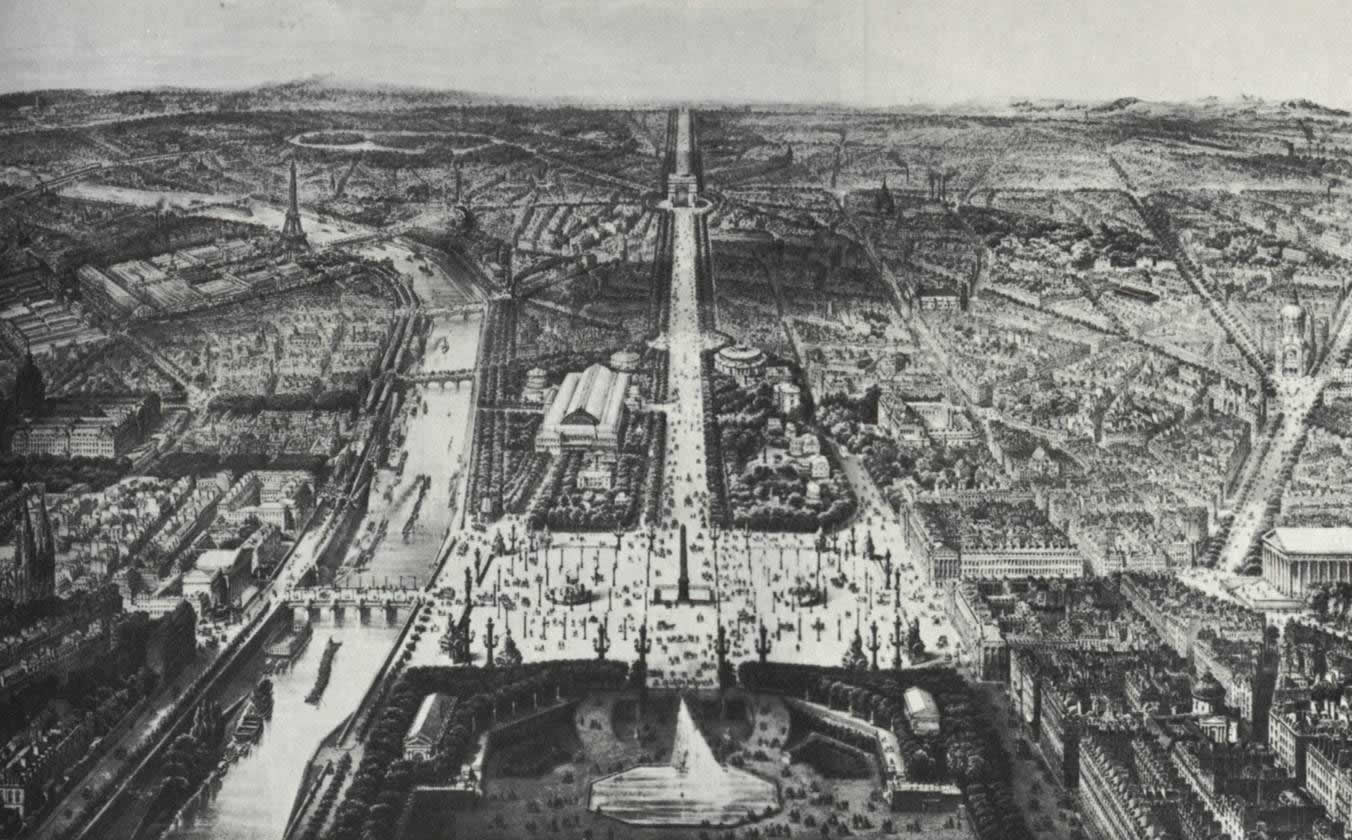Architecture and Film 2005 - Zero Gravity in Film
Total Urbanization of a Planet - The Ecumenopolis |
||
Science fiction writers have long dreamed of a completely urbanized planet - a planet covered by a vast city, no longer "natural." The idea of the completely urbanized planet is recalled in the 1972 film, Silent Running. In this film, no images of earth are shown, but the descriptions in plot imply that no vegetation exists on earth, the planet has become completely urbanized. The only vegetation left for the human race exists in space, and even this is eventually abandoned. Somewhat pessimistic, heavy-handed and didactic in terms of plot, this film nevertheless begs the question - what would the planet look like as a giant city, beyond the metropolis - an ecumenopolis. Long before Silent Running, this idea first surfaced with Isaac Asimov's Foundation trilogy of 1942. Here the idea of a planet existing entirely of architecture was put forth with the city "Trantor." Lucas used this city as a precedent for the Imperial City in the Star Wars saga. Covering a whole planet in urban built form, the Imperial City was originally planned to be included in the original Star Wars: A New Hope as the planet "Jhantor," a clear reference to Asimov's "Trantor." Perhaps facing the same difficulties as Douglas Trumball, director of Silent Running, Lucas was unsatisfied with the technology available at the time to portray this planet-city, and instead revised the plot to omit it. The Imperial City, renamed "Coruscant" (meaning glittering, shining, full of light) was first introduced in Episode I: the Phantom Menace. |
||
 |
||
The general layout of the city-planet,
and its underlying infrastructures are not overtly discussed in the Star
Wars films. However, in the Star Wars Expanded Universe,
the writings and musings of the various fans and authors influenced by
the films, the following description is given of the evolution of a planet
made entirely of urban form: |
||
Countless years of civilization have indelibly changed Coruscant's ecology. The planet is actually colder than what humans would normally deem comfortable; immense orbital mirrors warm its upper and lower latitudes by refocusing and distributing stellar energy. The planet's heat is regulated by thousands of strategically placed CO² reactive dampers in the upper atmosphere. Coruscant's water network melts polar ice and pipes the water across the planet. The city's huge amount of sewage and refuse are blasted into space, targeted towards Coruscant's sun. In a world encased in artifice, gregarious indigenous and transplanted wildlife has nonetheless prospered. Hawk-bats and granite slugs dwell in the urban jungle, and the lower depths of Coruscant are filled with frighteningly unwholesome creatures that have evolved deprived of sunlight. |
||
Technically, the workings of Coruscant seem plausible, yet what would the social impact of such a hyper-dense urban situation be? |
||
A certain level of control is necessarily exerted in such an urban situation. The constructed spaces appear to reinforce this need, with influences and precedents in architectural references.The clear cut axes of Haussman's Paris (below) for example, are mimicked in the view of Coruscant. The relative sizes of buildings are much greater in the space imagery, and the axial boulevards seem wider and more powerful in scale. |
||
 |
||
View of Coruscant with axes leading to governmental buildings |
||
 |
||
View of Haussman's Paris with axes carved from the chaotic medieval fabric, from Benevolo |
||
A more pessimistic representation of urban
environments in space is that of a dystopia - a world completely constructed
and run by humans, and fallen into dictatroship and corruption. This "building
out of control," both the startling mass of buildings seen, as well
as the totalitarian regimes based around an architecture of control that
is prevalent in many artists’ conceptions of the future is a frequent
theme in space films. |
||
In Outland, the architecture of control is portrayed in repetition, emphasizing a lack of space and feeling of compression in interior environments. As well, the main premise for the settlement on a moon of Jupiter is for mining, exploitation of natural resources, a commodity presumably controlled by a capitalist market. |
||
 |
||
The monotonous layers of the mining operation in Outland |
||
The images of Coruscant from space imply a specific organization, with axes, centres, and foci. Ironically, these views of a completely urbanized planet recall diagrams from Ebenezer Howard's idyllic Garden Cities from the late 1800s. Though drastically different in intended appearance and materiality, both views relate an optimism regarding modernism, progress, the ability for technology to enhance everyday life. |
||
 |
||
 |
||
View of Coruscant from space |
||
 |
||
Howard's Garden City Diagram, from Benevolo |
||
Further questioning the freedom of life on a completely man-made planet, Lucas juxtaposes Coruscant with it's dark counterpart - the Death Star. The Death Star first appears in Star Wars Episode IV: A New Hope as the planet-sized weapon capable of utter destruction. However, the appearance of the plans for its construction at the end of Episode III adds a new meaning - it is the subversion of the Imperial City, symbolizing military power and the corruption of political control. Fitting with the general themes of the Star Wars epic, there is a light and a dark side to the possibility of an ecumenopolis - one representation is a forum for discussion and peace, the other is run as a machine, a weapon of terror. |
||
 |
||
The Death Star, a megalopolis weapon |
||
Return to Environments in Zero Gravity Main Page